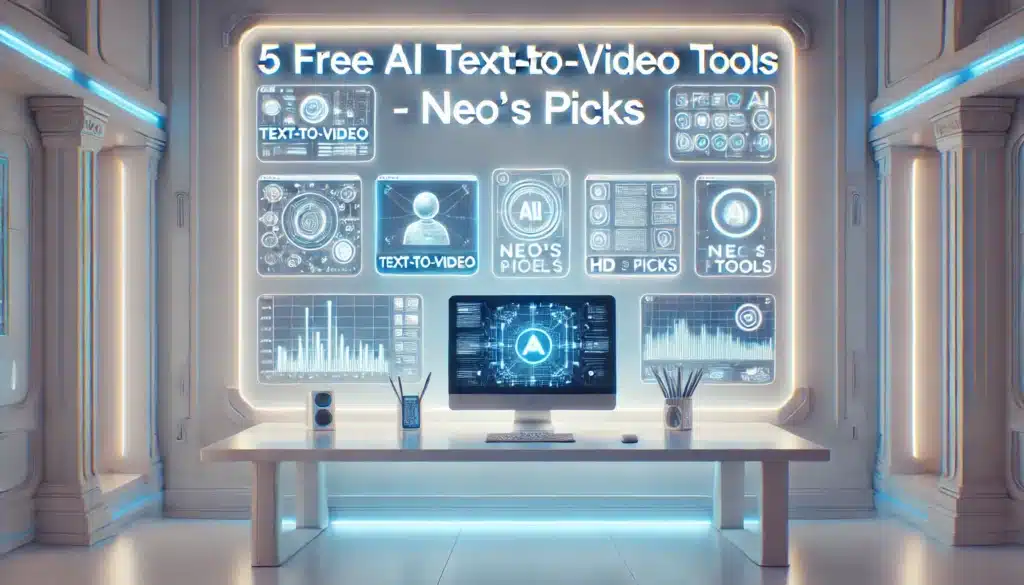The Evolution of Video AI Tools: What’s New in 2025?
The world of video creation is about to undergo a revolution, driven by the power of artificial intelligence (AI).
By 2025, AI-powered video tools will fundamentally change how we create, edit, and interact with video content.
These advancements promise to streamline production processes, enhance real-time editing capabilities, and unlock new possibilities for personalization, accessibility, and security.
From automated editing to real-time video generation and multi-modal interactions, AI is reshaping the landscape for content creators.
In this article, we’ll dive into the key trends and innovations that will define the future of video AI tools in 2025.

1. Real-Time Feedback and Multi-Modal Interaction: Making Video Creation as Easy as Chatting
Real-Time Video Editing
Picture this: you’re creating a video and making adjustments on the fly with just your voice or a wave of your hand. Thanks to advancements in AI and natural language processing, this is no longer a distant dream.
Soon, video creators will be able to make real-time edits simply by speaking commands or using gestures. You could say “brighten the lighting,” and the AI will automatically adjust the brightness for you.
The need for complex editing software interfaces will disappear, making video creation more intuitive and accessible for everyone—from beginners to pros.

Multi-Modal Interaction
Another game-changing feature of AI-powered video tools is multi-modal interaction.
These tools will allow users to input commands through voice, text, and even visual cues. For example, you might give a voice command to trim a video while simultaneously typing a prompt to add subtitles or effects.
This seamless interaction will not only make editing faster but will also open up new creative possibilities by allowing multiple types of input to work together in real-time.

2. Instant Video Generation and Editing: Forget the Wait—Create Content in Seconds
Instant Video Creation
Video production has traditionally been a time-consuming process—sometimes taking days or even weeks, especially for high-quality content.
However, AI is changing all that. Tools like Runway’s Gen-2 and Synthesia have already demonstrated the power of text-to-video technology, turning a script or even a basic idea into a polished video in minutes.
By 2025, expect even faster video creation capabilities. AI will generate entire videos from simple text or voice prompts, making it ideal for businesses or content creators who need to churn out high volumes of video content quickly—whether for social media, e-commerce, or educational purposes.

Smart Editing Tools
AI isn’t just speeding up video creation; it’s also improving the editing process.
AI-powered tools can automatically analyze footage and suggest or make edits based on content recognition.
For instance, Adobe Premiere Pro already uses AI to identify people, objects, and scenes, making editing faster and more efficient. In the near future, AI will go even further—creating automated edits with minimal input from the creator.
This could include tasks like trimming unnecessary footage or adjusting color and lighting for better visual appeal.

3. Smart Video Optimization: AI Helping You Become a Social Media Video Pro
Automated Social Media Optimization
AI will also play a huge role in optimizing videos for different social media platforms.
Social media is all about short, punchy content that grabs attention, and AI will help create that.
It will automatically adjust your video’s length, aspect ratio, and format based on the specific requirements of platforms like Instagram, YouTube, or TikTok.
On top of that, AI will optimize videos for engagement, adding things like dynamic captions or even creating multiple versions of the same video with different hooks to increase reach and viewer interaction.

Real-Time Video Enhancement
Real-time video quality enhancement will also become a staple in the AI video editing toolkit.
Technologies like NVIDIA’s Deep Learning Super Sampling (DLSS) are already being used in gaming to upscale video in real-time, and by 2025, these tools will be fully integrated into video editing software.
This will allow creators to enhance the resolution, color accuracy, and overall quality of their footage as they work on it, even if they’re starting with lower-quality video.
It’s a huge win for those working with live stream footage or older content that needs a refresh.

4. A One-Stop Creative Hub: Simplifying the Video Creation Process
Text-to-Video and AI Animation
The future of video creation will bring all-in-one platforms that allow creators to produce everything from videos and animations to text-based storytelling—all using AI. These platforms will streamline the creative process, allowing content creators to generate high-quality video content without needing multiple software programs or professional production teams.
For instance, imagine being able to input a simple script or idea, and having AI instantly generate a fully animated video with voiceovers, music, and effects. Whether you’re in marketing, education, or content creation, this will massively simplify video production, allowing you to create professional-grade content without breaking the bank.

AI-Generated Storytelling
AI-powered video tools will also change the way stories are told. Instead of creating static content, AI will use machine learning to craft personalized narratives that are tailored to specific viewers or audiences. Brands will be able to create targeted ads that speak directly to individual customers, making the content more engaging and effective. This personalized approach will help businesses increase marketing ROI by delivering relevant and compelling content to the right audience.
5. Accessibility and Personalization: AI Ensuring Everyone Can Enjoy Videos
Real-Time Translation and Subtitles
As video content reaches a more global audience, AI will be key to making it accessible to everyone. Tools that provide real-time transcription and translation will be built into video platforms, allowing videos to be automatically subtitled in multiple languages. This means that content creators can reach a global audience, regardless of language barriers.

AI-Powered Sign Language Translation
AI will also provide real-time sign language translation, making videos more accessible to the deaf and hard-of-hearing communities. By analyzing spoken language in videos, AI will translate it into sign language, providing a more inclusive viewing experience for everyone. This will be a huge step forward in improving accessibility and inclusivity across digital media.
The Future of Video AI Tools Is Brighter Than Ever
By 2025, video AI tools will revolutionize how we create, edit, and consume content.
Whether for marketing, entertainment, or education, these tools will push the boundaries of what’s possible, offering exciting new possibilities for creators and audiences alike.
But here’s the real question: How will you use AI to transform your own video projects?
We want to hear from you!
How do you see AI changing the way you create and interact with video?
Will you embrace real-time editing, or are you most excited about the potential for AI-powered personalization? Drop a comment below and let us know your thoughts.


